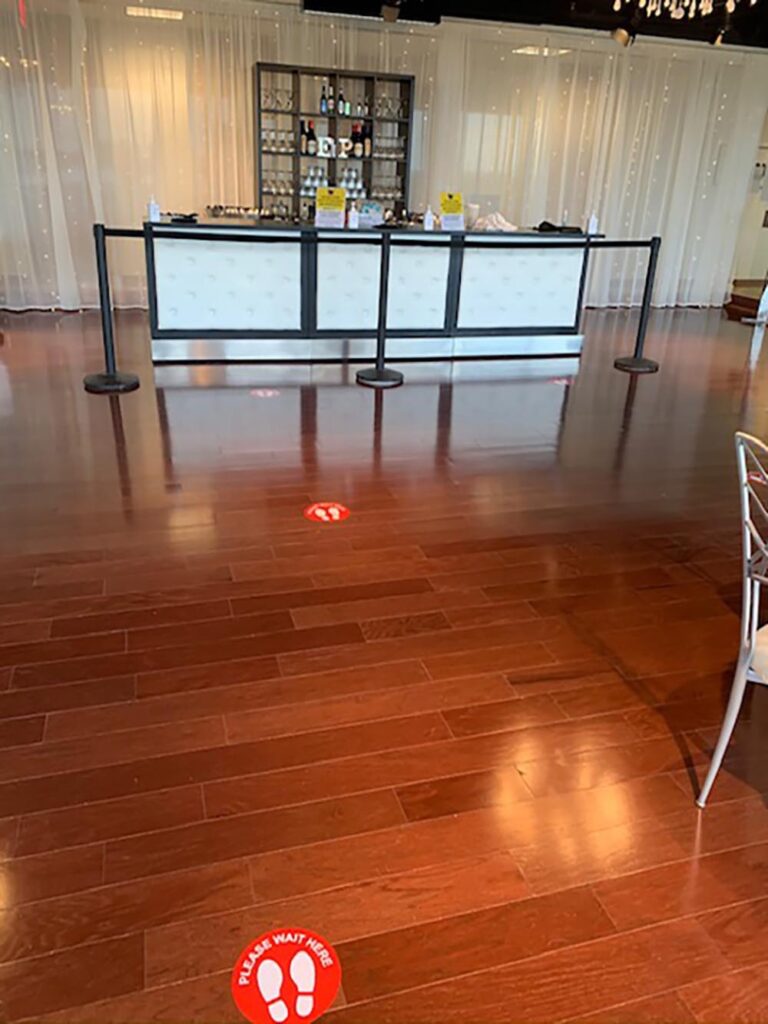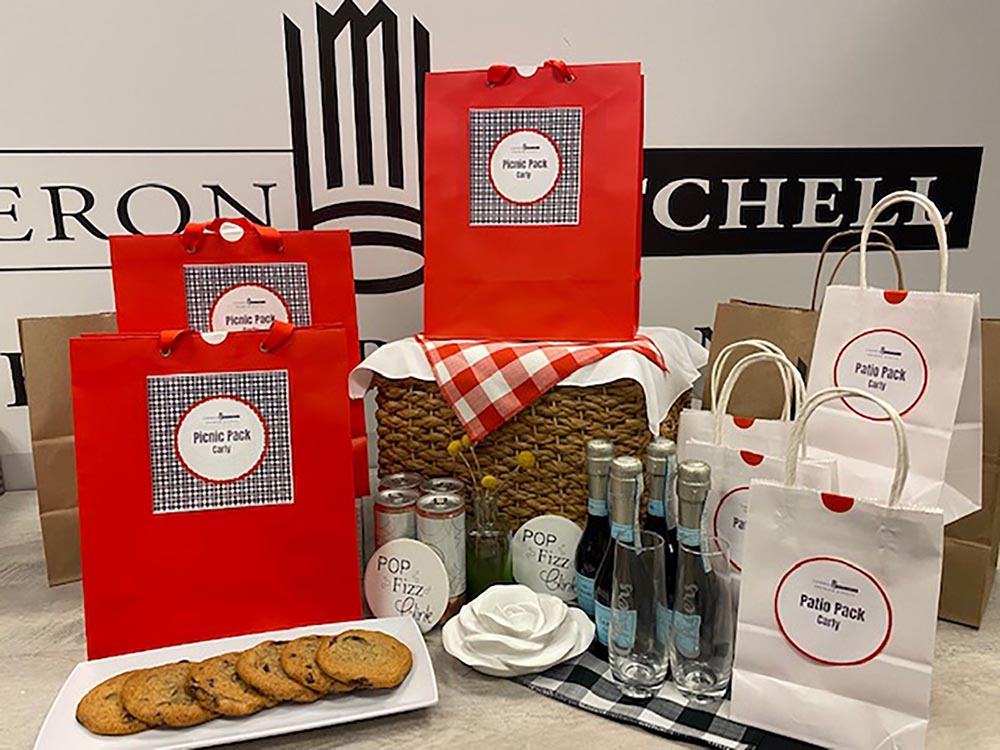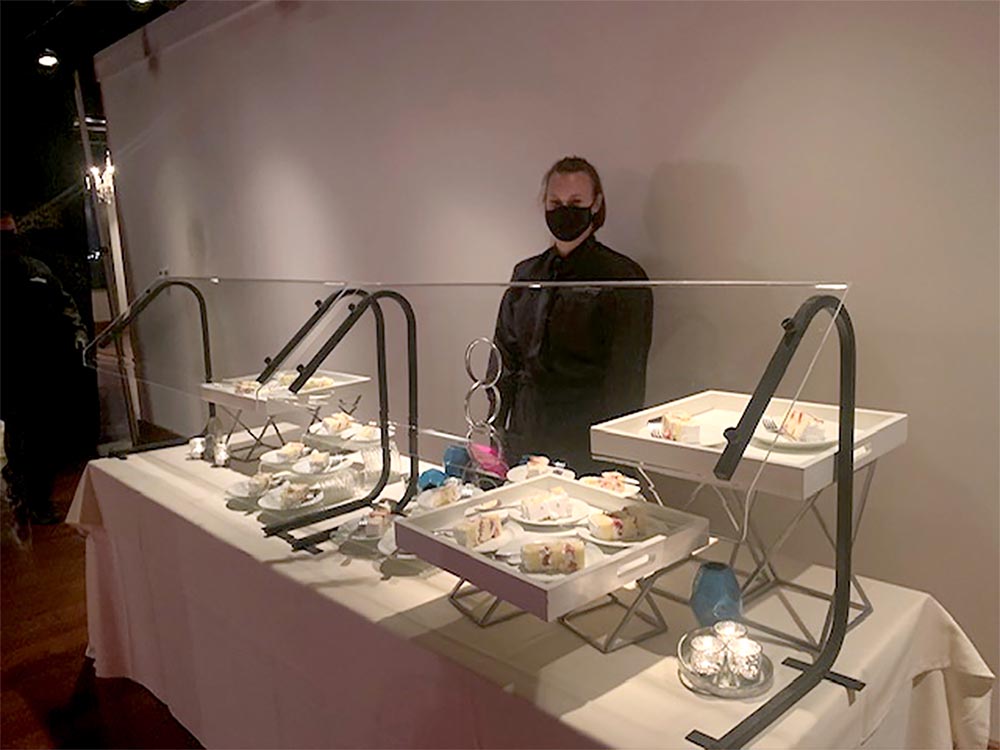Melissa Johnson of Cameron Mitchell Premier Events shares the company’s best post-COVID safety practices

By Sara Perez Webber
As vice president of Cameron Mitchell Premier Events (CMPE) in Columbus, Ohio, Melissa Johnson oversees a team that generates more than $15 million in revenue for the Cameron Mitchell Restaurant group, one of the largest and most successful independent restaurant groups in the country. Johnson has been working closely with meeting groups to develop guidelines and practices to ensure health and safety are the top priority for any event or gathering they plan.
“We have a COVID Task Force who diligently spend their time on CDC recommendations and the Cleveland Clinic’s recommendations, and formulating the training needed to safely operate,” she says. The team focuses on how to keep an event as much in line with the client’s vision as possible, while operating in a safe and responsible manner. Associates are continually trained in the protocols, including how to manage guests who don’t adhere to the rules with a “hospitality first approach.”
As of late July, CMPE had catered 12 full-service events since the restrictions in Ohio were lifted on larger gatherings. Following are some of CMPE’s best practices in the post-COVID era, as well as Johnson’s take on how catering and events will continue to evolve.
Safety First

CMPE meets and exceeds Ohio’s health and safety guidelines. All event guests are required to check in upon arrival at a “Welcome Wellness Table,” where they sanitize their hands; provide their names; and sign an acknowledgement that they are symptom-free, do not have a temperature over 100°F, and agree to all of CMPE’s health and safety protocols. “This helps us with our own contact tracing in case it’s needed,” says Johnson. Other practices include:
- Hand Sanitizer Stations at each entrance, at restroom entrances and throughout the venue.
- Sanitation Stewards, who are focused on cleaning common areas and restrooms, fully stocking sanitation items and ensuring safety protocols are followed.
- Restrooms limited to two people at a time.
- Masks required for all associates.
- Masks required for guests in all common spaces, when entering, when exiting, and when standing and talking while socially distanced. Masks may be removed when they are seated at their table.
- Associates receiving a wellness check prior to each shift and staying home if they show any symptoms.
- A signed acknowledgment on file for all employees of COVID-19 training and safety.
- Proper glove use and handwashing required by all staff, and scheduled station sanitation times for the kitchen team.
- ServSafe-certified associates onsite at all times.
Being Social While Socially Distancing

Ohio (at press time) allows groups of up to 300 people. No matter the event, guests must be socially distanced, with tables or guests spaced six feet apart, so Johnson and her team work to ensure the floor plans for each event can fit in the venue. A general recommendation is 60-inch tables with 6-7 people at each, or up to 8-10 for tables with family members.
The dancing protocols are particularly tricky. “We have added tall cabaret tables to help spread out people on the dance floor,” says Johnson. “We encourage the band to play slower songs after a few higher energy songs.” Furthermore, Johnson’s team is suggesting that clients consider LED wristbands for guests (who must wear masks while dancing), which would help manage how many people are on the dance floor. A guest enters the dance floor when the wristband lights up in a certain color and leaves when the color turns off.
Additional protocols include:
- All food and drink must be served. No one can congregate at the bar. Instead, guests can walk up to a bar to get a beverage from a masked bartender.
- The line for the bar is marked with indicators of where to stand to maintain social distance.
Revamped Serving Styles

Menus and service have changed for full-service events. Buffets and stations require a socially distanced line, protective acrylic in front of the food items, and food passed by an attendant through an acrylic partition. Since those protocols are not always easy to accommodate, most events are moving to plated meals. Food protocols include:
- Salt and pepper are only available by request.
- All guests must be seated to consume food or beverage.
- Hors d’oeuvres may still be tray-passed, but in a way that ensures guests can’t contaminate the food. To avoid this, pre-plated hors d’oeuvres can be offered to seated guests.
Family Meals and Meal Kits
During shelter in place, CMPE began offering Family Meals and Kits for curbside pick-up or contact-free delivery. The menus focus on value, convenience and comfort dining. “We are seeing an increased interest in food requested for virtual meetings,” says Johnson, who believes these family meals and kits are here to stay. “We have done this with nonprofit groups as they hold virtual fundraising events; company meetings; and socially for people having a virtual get-together online, for a baby shower, for example.”
The meals and kits are ideal for:
- Virtual meetings and events; delivering a meal kit to each participant helps them feel connected.
- Large families and social gatherings.
- Offices and corporate clients, with individually bagged meals that can be personalized by the sponsor.

Social Gatherings Returning
Outdoor weddings and social events for groups of 25-50 are on the rise, says Johnson. While CMPE can provide these events “in a box,” Johnson is seeing requests increase for catering staff on site. For these social events, Johnson has created:
- A “Weddings Protocol” brochure to help couples plan their special day during these uncertain times, with guidelines for everything from table seatings to dancing to how to serve the wedding cake.
- Patio Packs for the now very popular socially distanced happy hours. These are small, individually packed bags with a themed snack and beverage, personalized with each person’s name.
Changes Here to Stay
Someday events will look more like they used to pre-COVID, most likely after the introduction of an effective vaccine. Even so, some of the protocols followed now will continue as best practices, believes Johnson, because they make sense long-term. She predicts the protocols with staying power include:
- Having a sanitation steward clean common areas during events.
- Keeping the acrylic pieces in front of food stations and having attendants serve the food on buffets and stations, because it’s sanitary and controls portions.
- Delivering food to clients in virtual meetings.











